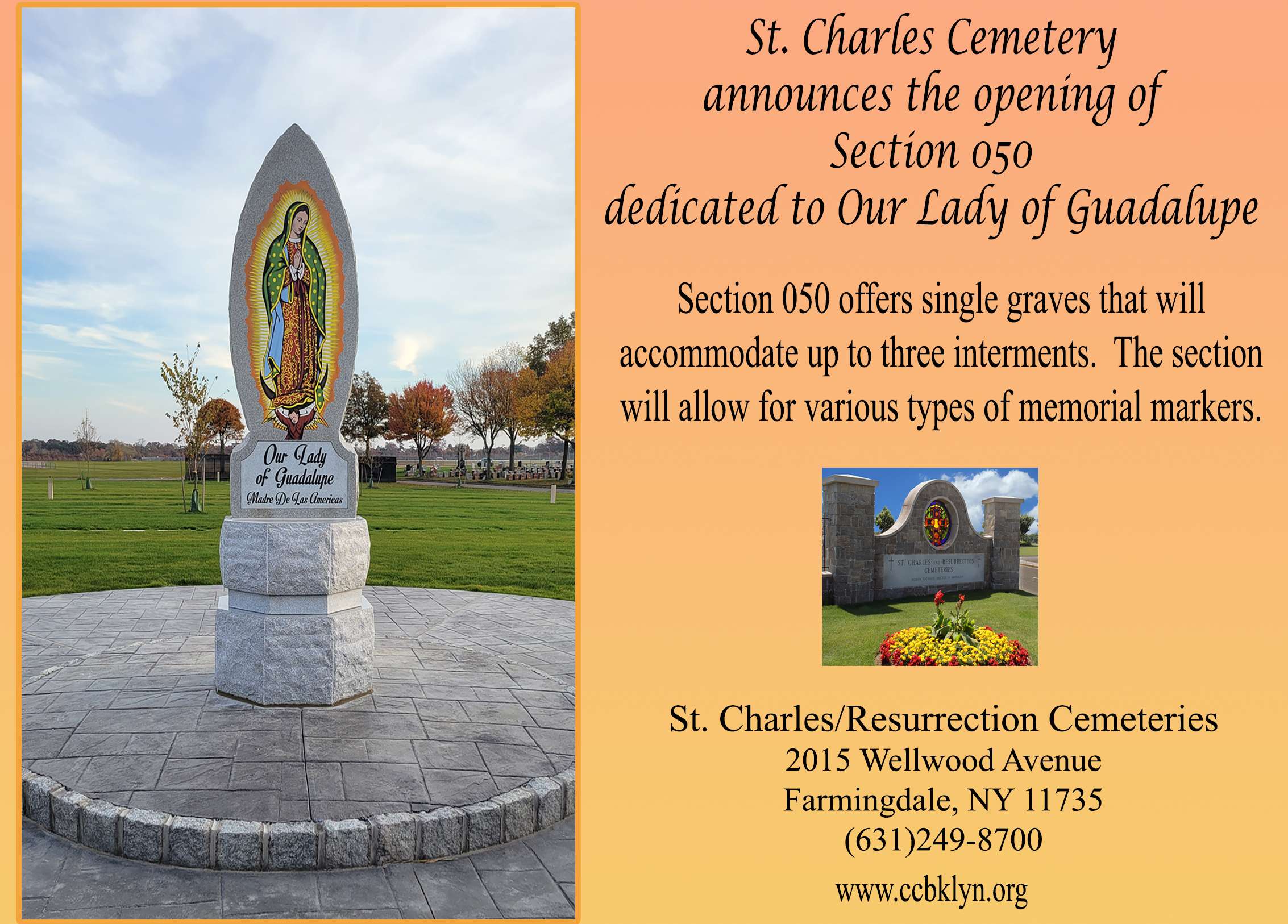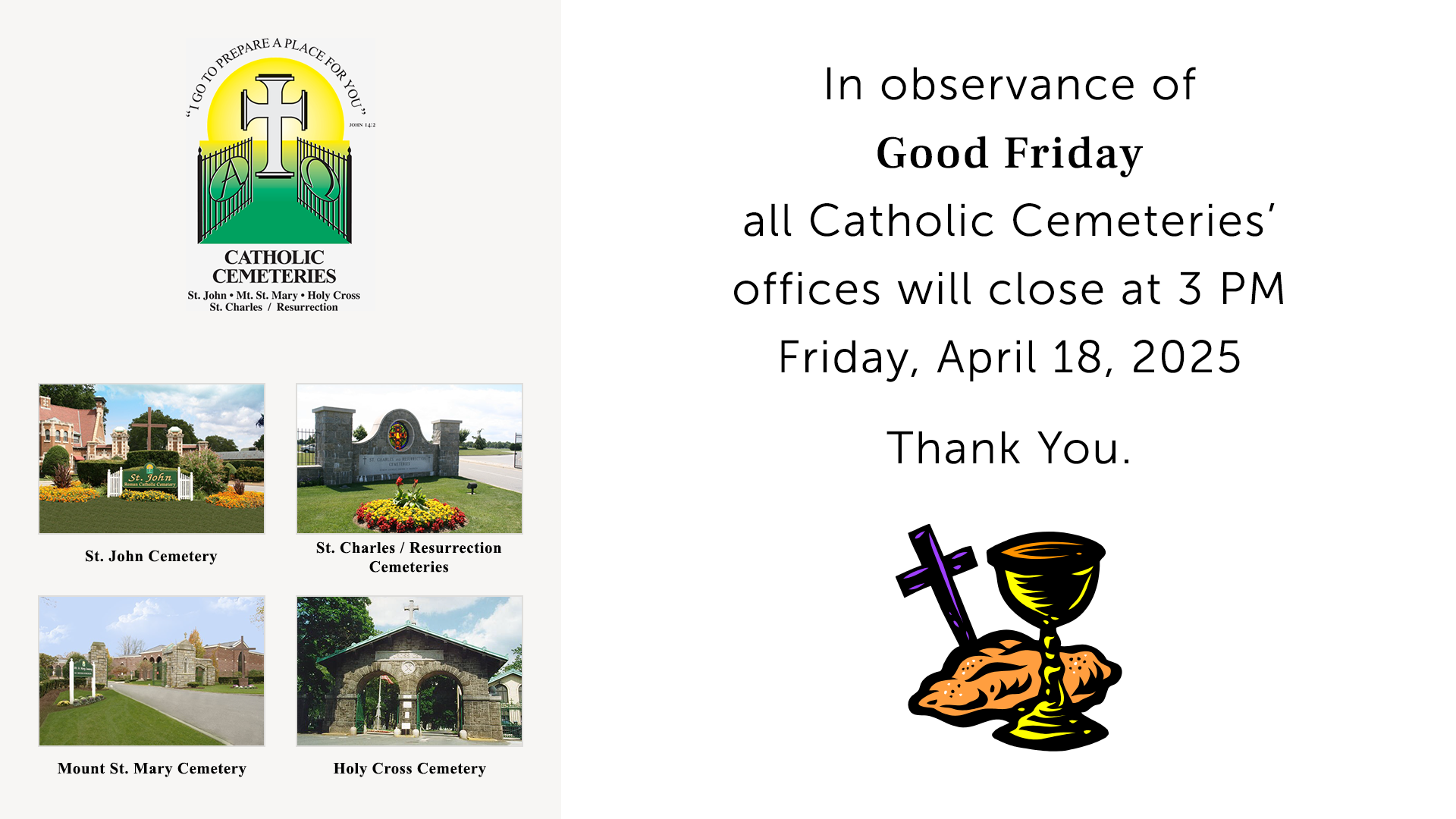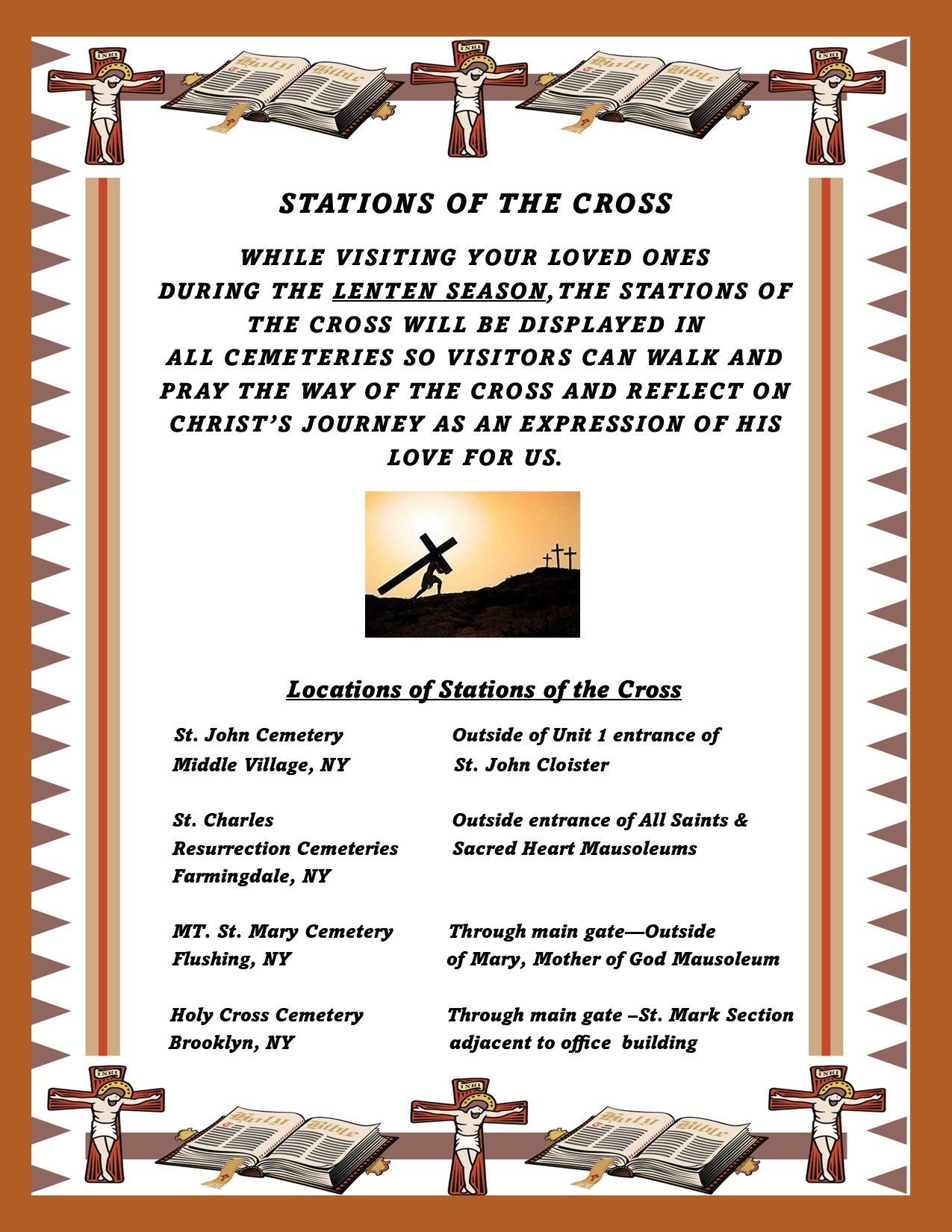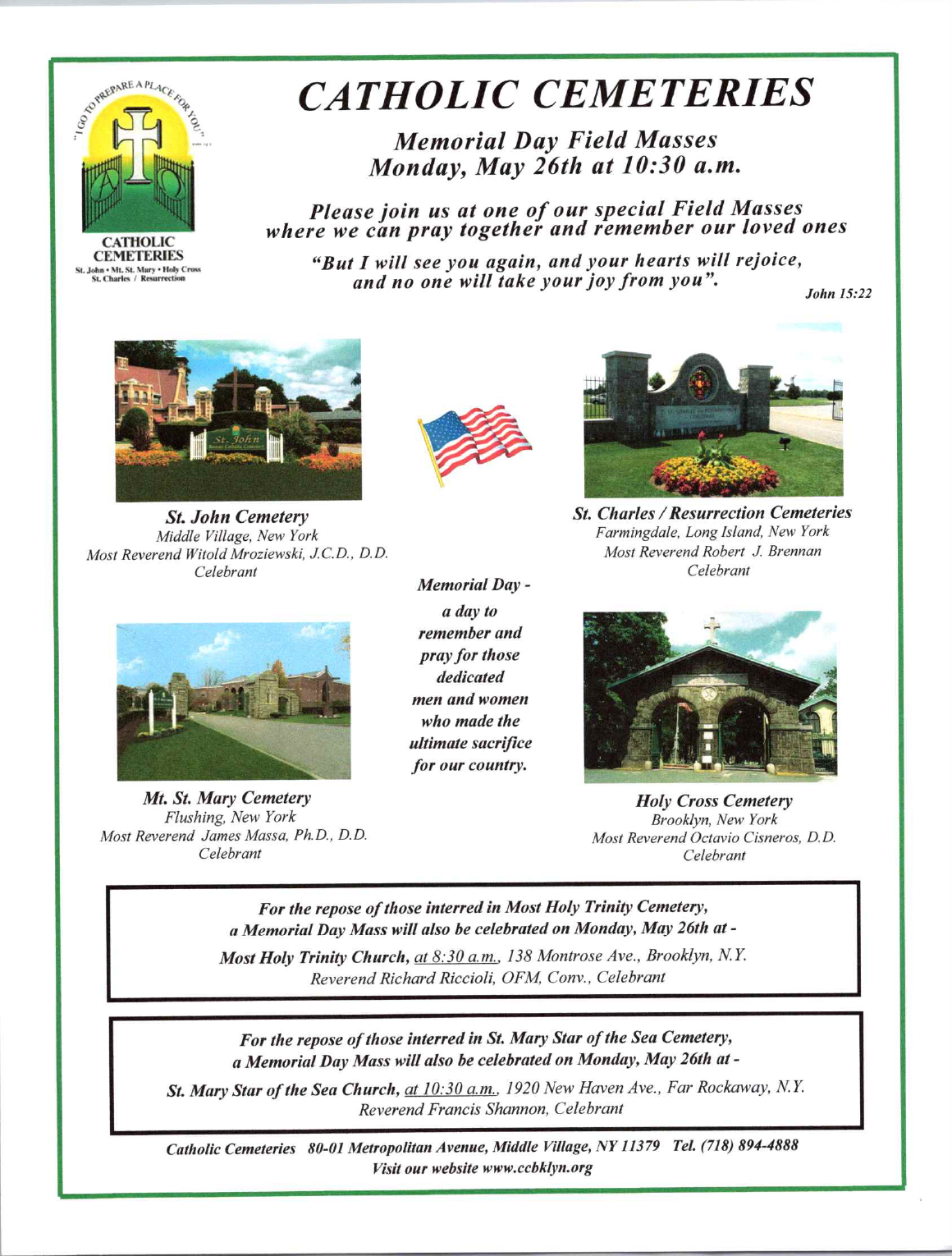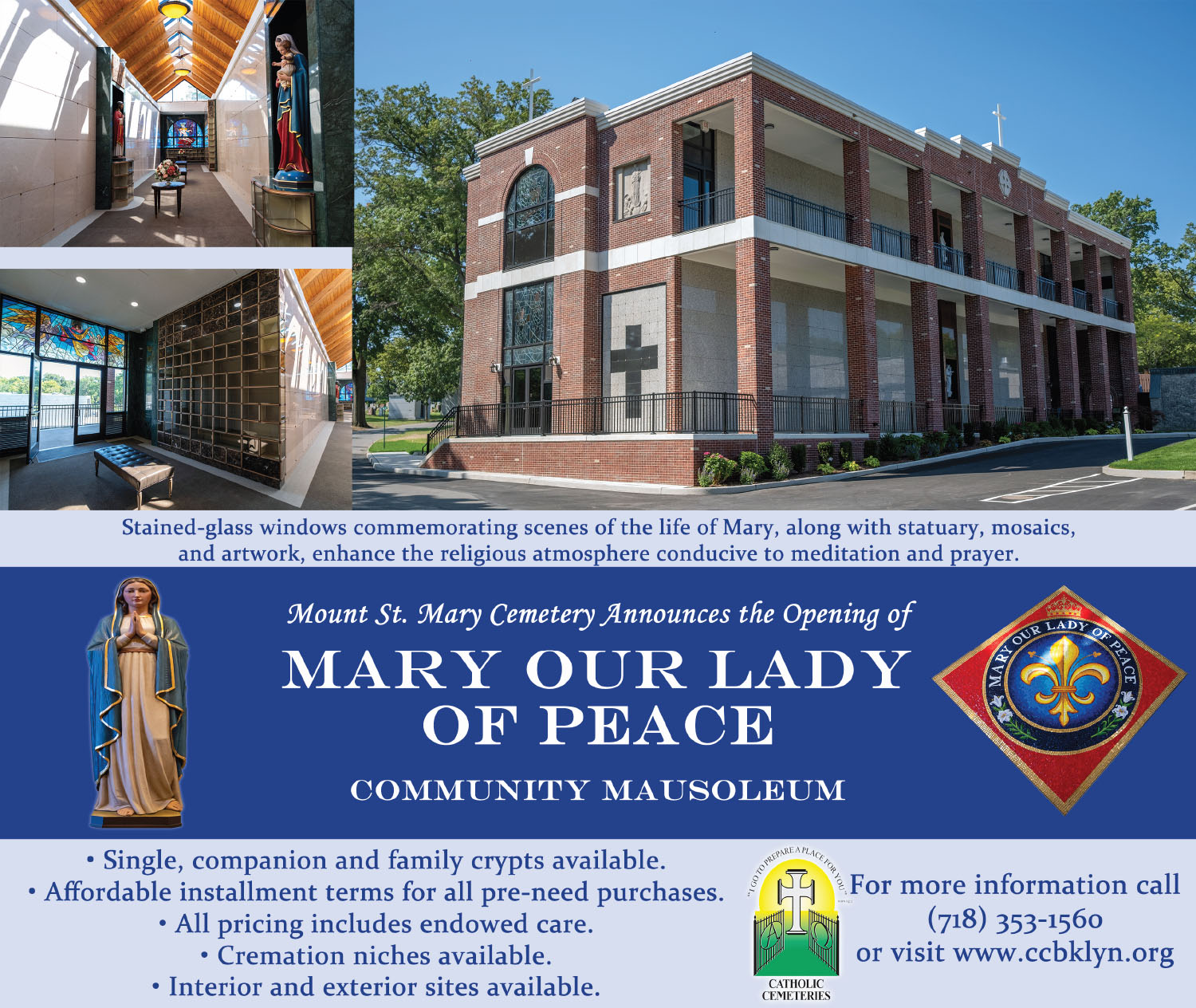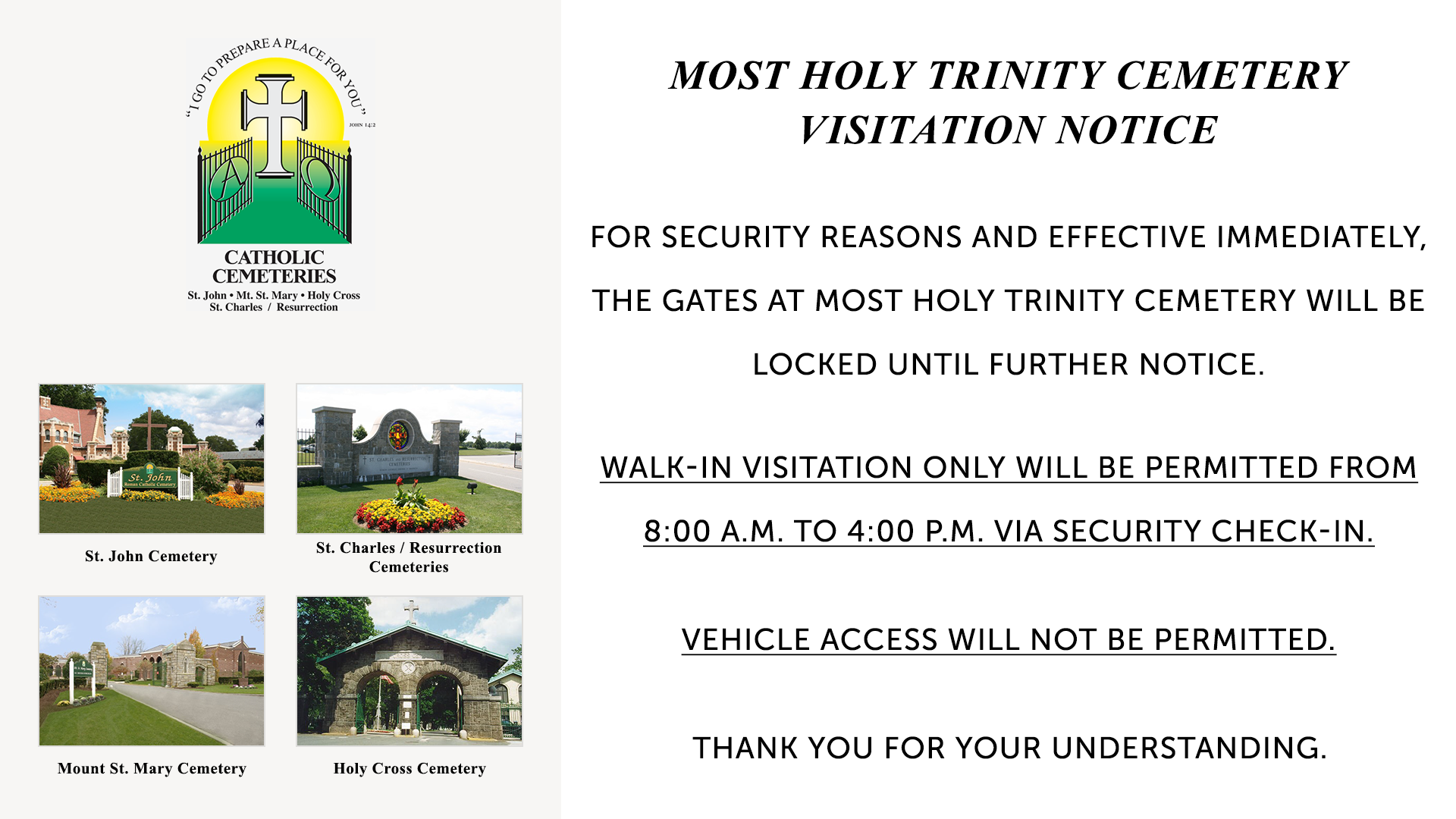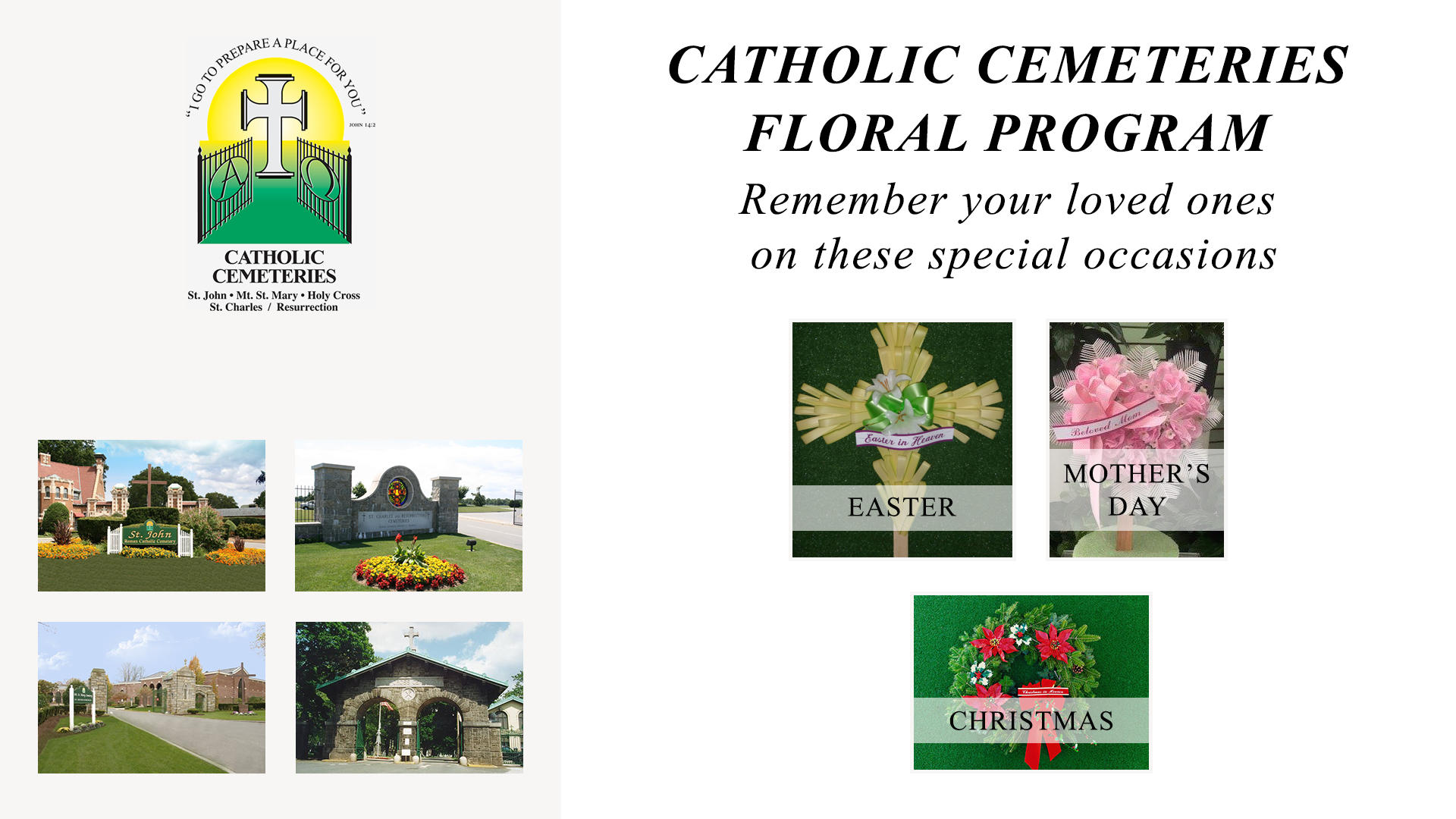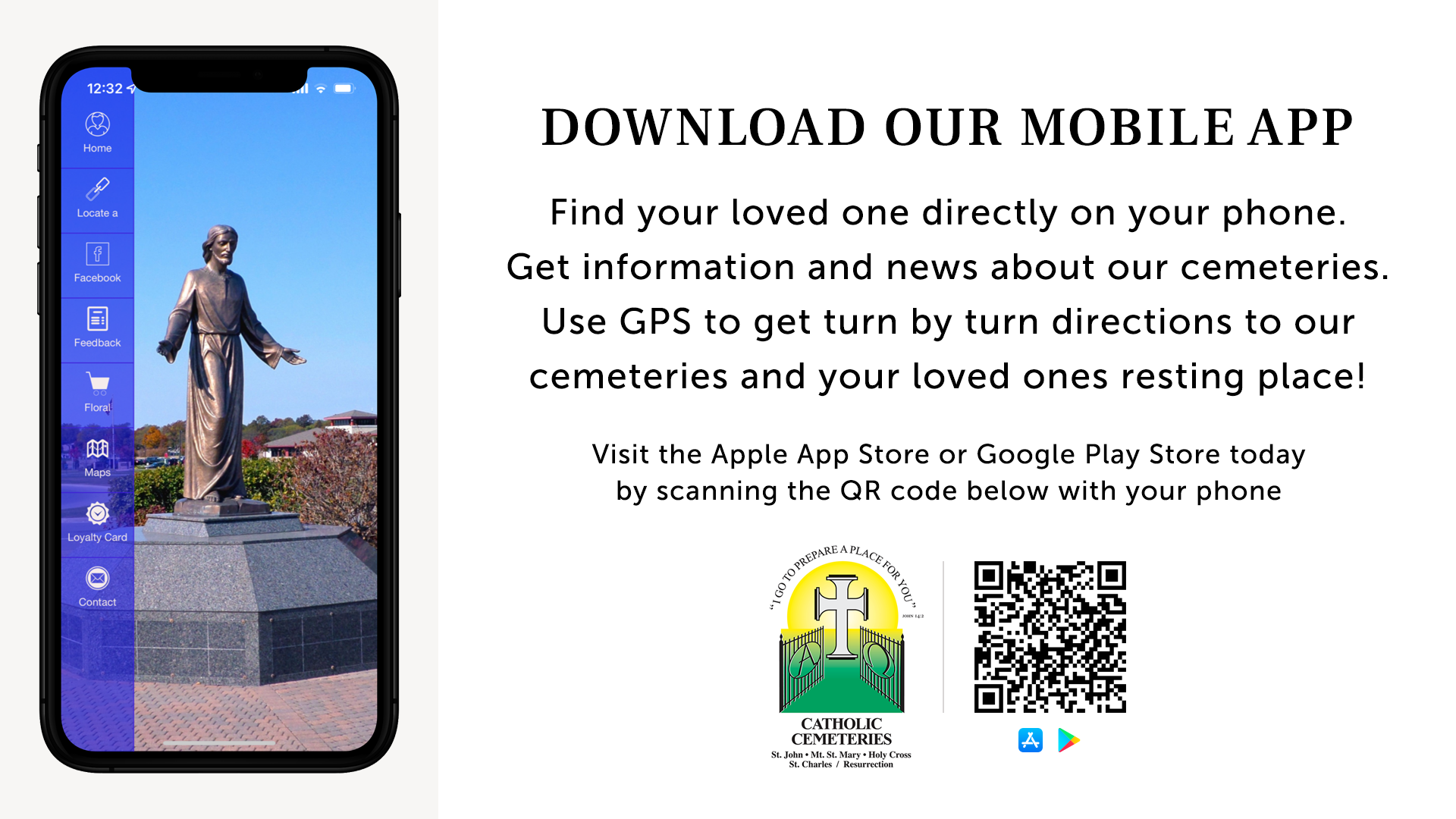Frequently Asked Questions
Planting regulations reflect the need to address both safety and maintenance concerns. Besides the possibility of loss or damage, such items impede the care and maintenance of the cemetery by interfering with our trimming crews. Also, hard plastic or metal objects hit by a trimmer can become a flying projectile capable of hitting another worker or a visitor. As part of a community, our desires need to be balanced in consideration of those around us and we appreciate your understanding. These items will be subject to removal without notice. Catholic Cemeteries cannot be responsible for lost or missing items.
Though permitted during the winter months, artificial flowers impede maintenance during the growing season. A planted flower bed will help to restrict the growth of weeds, while artificial decorations do not. Weeds can also grow through the artificial decoration, making it extremely difficult to maintain the site.
In order to preserve the pristine and beautiful appearance of our community mausoleums, fresh and artificial flowers are not permitted. Also, indoor floral decorations do cause insect problems which are extremely difficult to control. Adhering flowers/decorations to crypt/niche fronts are not permitted since this can cause damage. Items which are adhered to crypt/niche fronts will be removed without notice. Families will be subject to the cost for repair or repolishing of damaged crypt/niche fronts.
Catholic Cemeteries follows a regular maintenance schedule which includes mowing at least weekly and trimming around memorials at least once every two weeks. However, since weeds do thrive during peak periods of spring rains as well as during the dry summer season, it may appear that your site hasn’t received recent care. Should you feel particular attention is warranted, please feel free to speak with one of our service representatives.
Our field/office staff take very seriously their responsibilities for those entrusted to our care. It is possible that some natural settling may have occurred and your site has received additional soil. If an interment has occurred nearby, the turf of your and neighboring sites may have been disturbed due to the sandy nature of the soil as well as the depth and equipment used to open that site. When your grave was originally opened, the turf layer of adjacent sites were similarly affected. However, please note that only the uppermost turf layer is disturbed. If field staff consider it necessary to remove plants or your monument to protect them from damage, they will be replaced as soon as possible. Monuments will be replaced after the interment is completed, and wherever possible, plantings are replaced as soon as weather conditions allow us to re-seed/restore the site. While full restoration is not possible during the winter months, all needed sites are reseeded as soon as weather conditions permit. To grow new turf, the entire area will be “hydro-seeded” with a mixture of seed, fertilizer, mulch, and a green-tinted gel binder which absorbs/holds moisture. Please note that this hydro seeding process will not damage or discolor monuments.
An 18″ planting area in front of each memorial is permitted to allow families to personalize their site. Unfortunately, while a bush/shrub may be very small when planted, over time it will grow to impede maintenance, even to the point of encroaching upon another grave. Such plantings may, therefore, be removed without notice.
Endowed care does not cover the maintenance of personal gravesite memorials which are the responsibility of the individual owner(s). Endowed care (included as part of a gravesite or crypt purchase, or when converting an annual care contract) provides for the general care and maintenance of a grave/crypt. For gravesites, this includes maintaining the general appearance of the site along with the cemeteries, and for restoring turf on the gravesite whenever necessary. Crypt endowed care provides the care and maintenance of the community mausoleum in which your crypt is located.
Unfortunately, even with the newest technology of installing beams/piers to support memorials, over time, it is still possible that a granite memorial will begin to sink into the lighter-density soil/sand earth. Should you wish to have a memorial raised, the Cemeteries can raise and recap the foundation at a reasonable fee.
In keeping with the Church’s tradition, the cremated body is to be treated with the same respect we give to the body of the deceased. Scattering, dividing or keeping cremated remains at home are not considered the reverent disposition that the Church requires. Cremated remains are to be buried/entombed, preferably in a Catholic Cemetery, and following all the rites provided by the Order of Christian Funerals. Should you wish additional information on cremation, please read the New York State Catholic Conference brochure Catholic Teaching on Cremation by clicking here.
The issuance of a Certificate of Right of Burial grants the plotholder the right of burial (only) in a grave or crypt/niche. It does not grant any ownership privileges or title to the land or crypt/niche itself. The Right of Burial is passed down to the owner’s direct or collateral line heirs upon his/her death. In order to open a grave/crypt/niche for burial/entombment affidavits are utilized (with or without presentation of the Certificate) and must be signed by the registered owner, or, if deceased, his/her rightful heirs.
Sections are designed to accommodate one (1) memorial per gravesite or plot for uniformity and appearance of the section. Also, the erection of an additional memorial will interfere and impede the opening of a grave, the interment/burial process and will hinder grounds maintenance.



